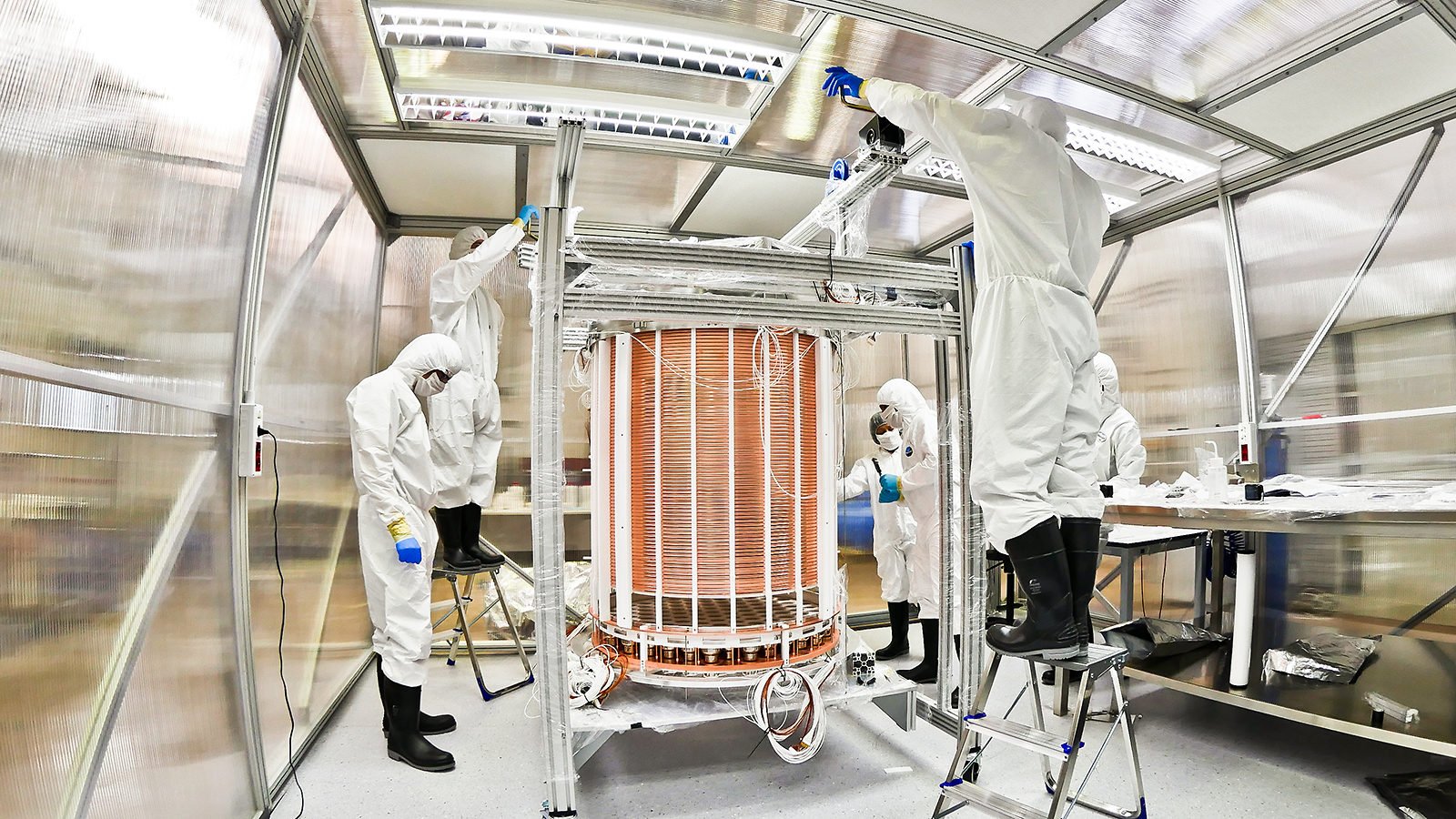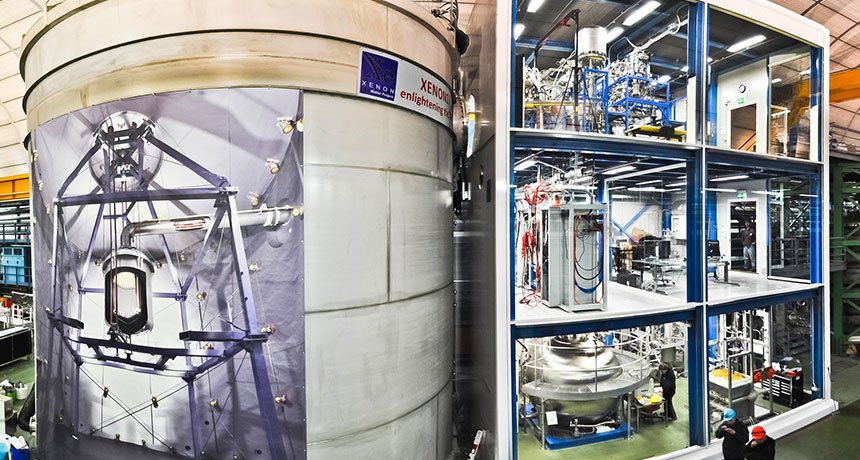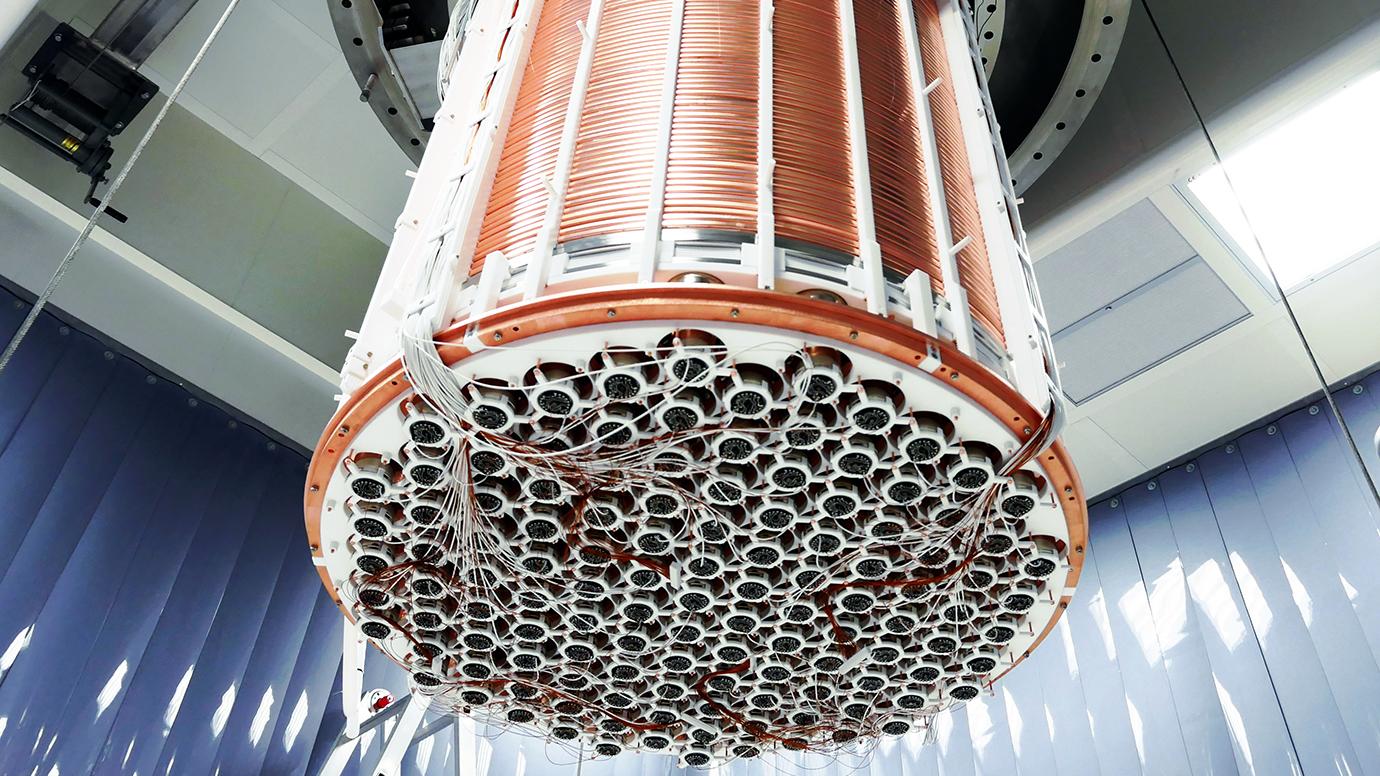Xenon1T was inaugurated in the 2014, with the purpose to decode one of the biggest mystery of the universe: what is the dark matter, that invisible and inexplicable matter which compeses a quarter of the Universe?
For five years the experiment went on, in the heart of the Gran Sasso. But it reached the biggest success this year, with the measurement of the rarest process of the Universe: the decay of the xenon-124.
Xenon1T
“Enlightening the dark” is the slogan chosen five years ago to inaugurate the experiment which had the ambitious project to clarify some of the biggest mysteries of the universe, which wanted to enlight the dark matter.
The experiment takes place in the national laboratories of the Gran Sasso (LNGS) of the National Institute of Nuclear Physics (INFN). To take part of the experiment are 21 groups from, besides Italy, United States, Germany, Switzerland, France, Portugal, Holland, Israel, Sweden and Abu Dhabi. To coordinate the experiment is the italian Elena Aprile.

The experiment consists in a real trap for the dark matter. Elena Aprile explained it: “To see the rare interaction of the dark matter’s particles with a detector, we need to build an instrument with a huge mass and a extremely low radioactivity, however the risk is to not having any chance to distinguish an event occured for the dark matter between the many other signs that make the cold noise”.
For this reason the experiment Xenon1T started.
The experiment and the dark matter
For the experiment the scientists needed the so called “cosmic silence”. It’s been chosen so to make the experiment in the italian laboratory of nuclear physics, which is protected by 1400 meters of rock, in the bowels of the mountain.
The structure that host the experiment appears massive. A cylinder about 10 meters tall with 700 square meters of pure water. Inside it is submerged another cylinder, which contains 3500 kg of xenon, an ultrapure noble gas, cooled at -95°. It contains, finally, the TPC, the Time projection chamber, the dark matter’s detector, the heart of the experiment.

“We predict that about 100.000 particles of dark matter go through a surface as big as a nail every second. The fact that we didn’t see them yet tells us, by the way, that their probability to interact with the atoms inside our detectors is really small, and that we need bigger and more sensible instruments to find the rare signatures of those particles”, explained Gabriella Sartorelli, coordinator of one of the 21 researchers’ groups, the italian one, in the 2014.
And so for five years the dector goes on with its tireless research of the dark matter.
The rarest event of the universe
The result obtained by Xenon1T earned even the front page of the magazine Nature. It’s the rarest event of the universe ever observed: the decay of the xenon-124. The decay sets on a process that transform the xenon-124 in tellurium-124. The process takes the name of double electron capture.
Marco Selvi, national responsible INFN for the experiment Xenon1T, explained: “Basically two protons of a xenon’s core capture two electrons of the surrounding cloud, by transforming themselves in two neutrons with the emmission of two neutrinos and a fix amount of energy, which is 64.000 elettronvolt”.
The discovery, therefore, was all casual. Selvi, infact, says: “It’s an unexpected measure obtained, like often happens in the science, while we were looking for something else, the dark matter which gives shape of a quarter of the cosmo. This result will give precious informations about the nucleus’ structure, which are usefull in the study of other processes ever more rare, like the so called double-beta decay without neutrinos, which will say us if the neutrinos acts like its antiparticle, like Ettore Majorana predicted about a century ago. A result that allows to enlarge our investigation’s field, and help us to explore the neutrinos’ world, from their nature to their mass, important particles for the universe’s evolution”.
Furthermore, the discovery arrives right before a major breakthrough of the whole experiment. The result infact showed to the world the potential of Xenon1T and its huge sensibility, in conditions of extreme pureness. But this will be soon supported, for the end of the 2019, by its successor, a detector that will work with a sensibility 10 times higher, to look through the dark matter’s mysteries.
This post is also available in:

